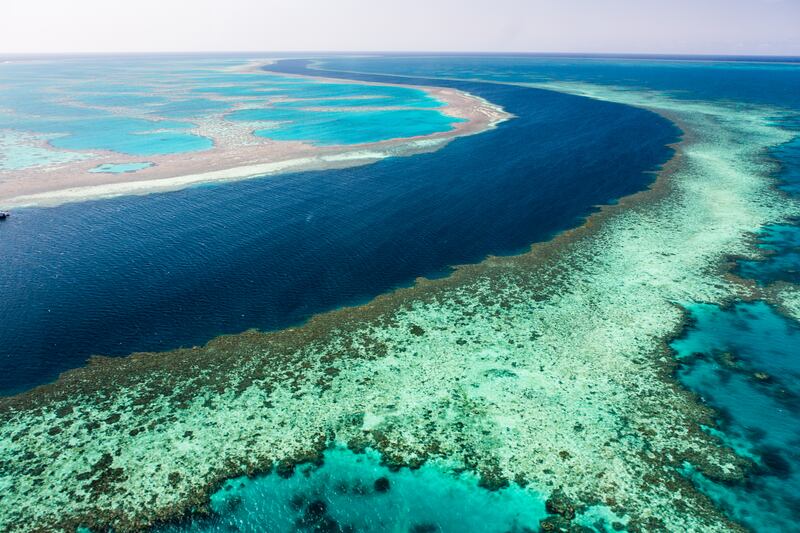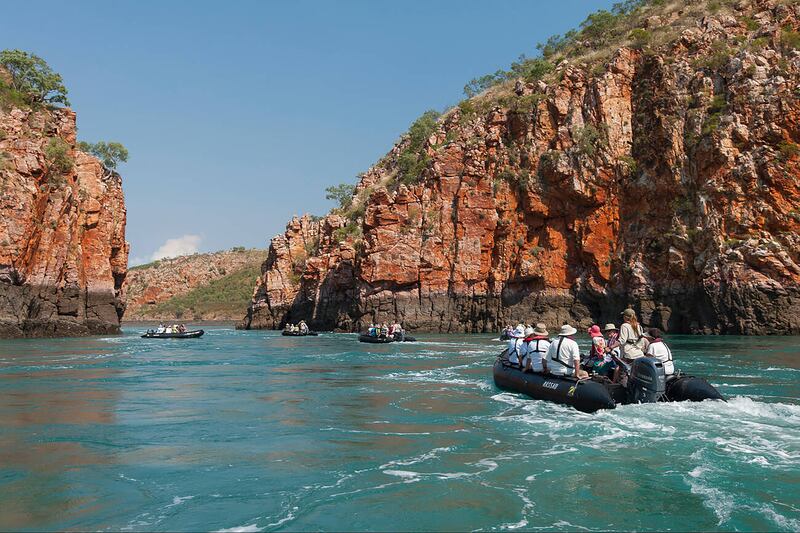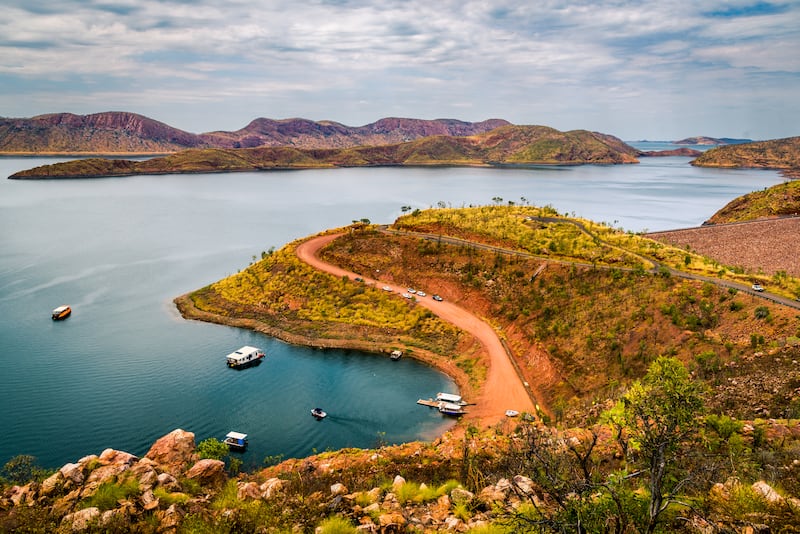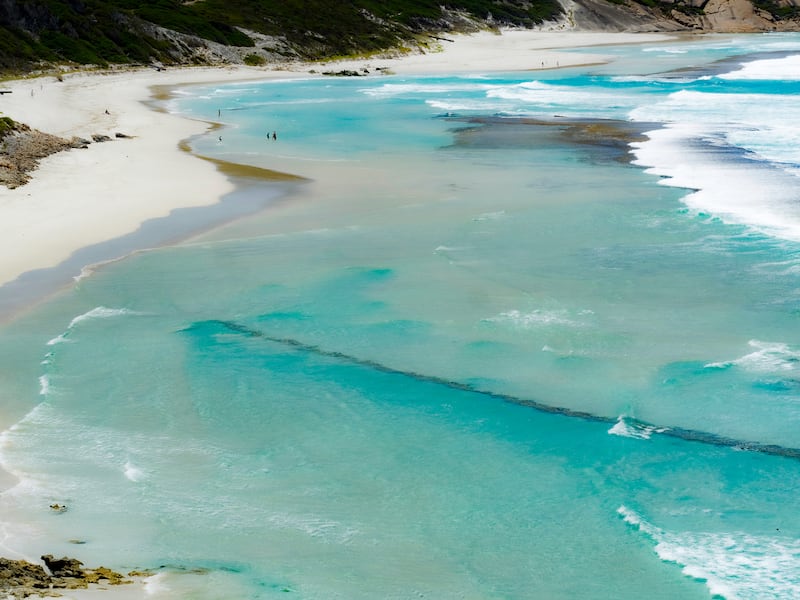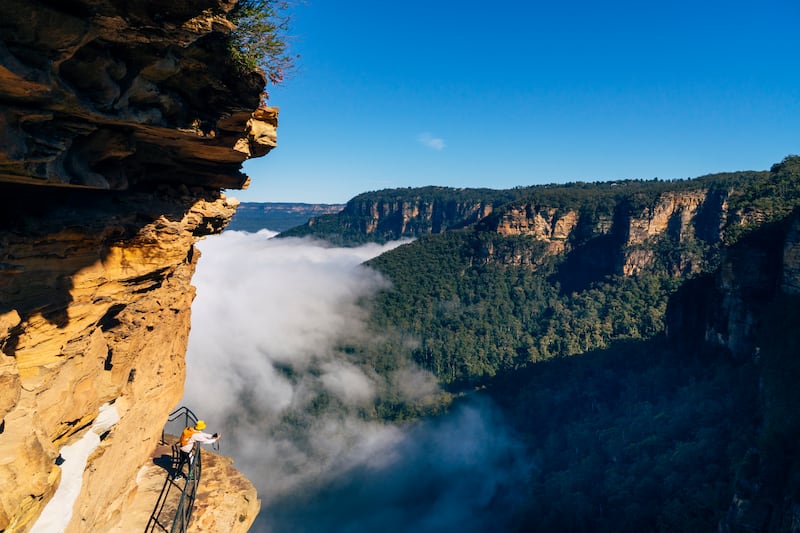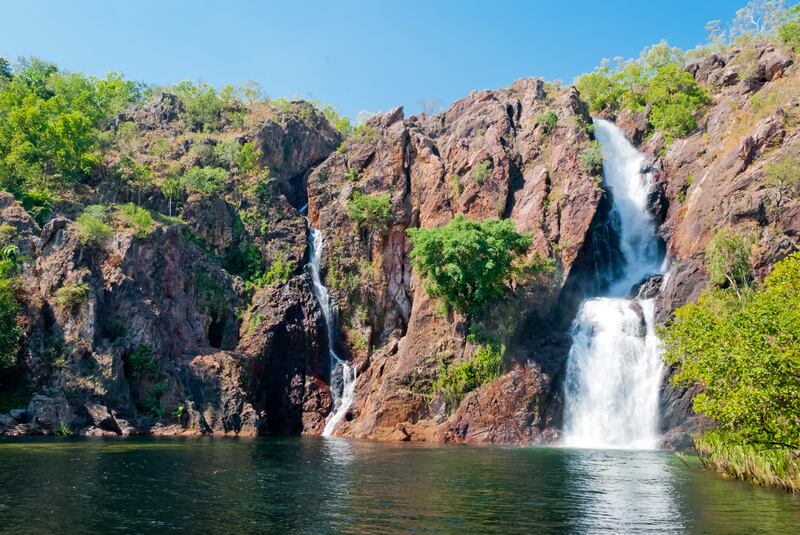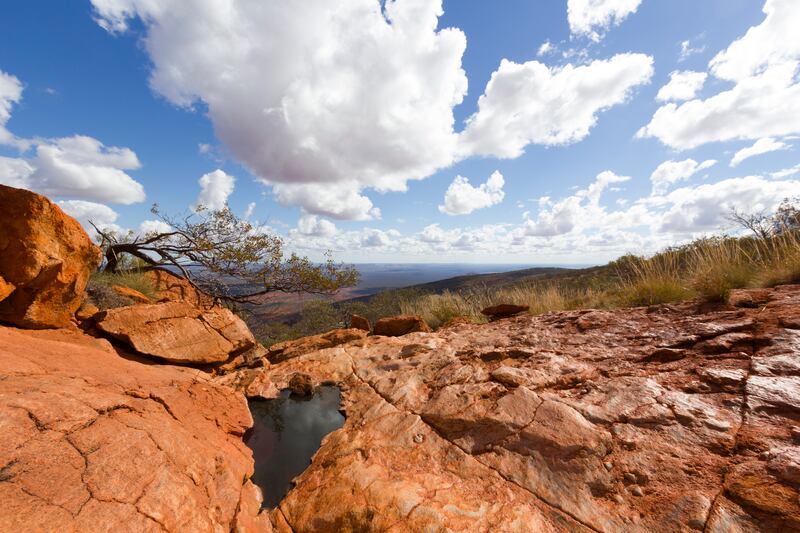An accident in May at a crocodile-infested "horizontal waterfall" has highlighted the danger posed by some of Australia's extraordinary natural attractions. Nine tourists were treated for serious injuries after a tour boat crashed at what David Attenborough has previously described as “one of the greatest natural wonders of the world” in Western Australia.
Called Horizontal Falls, this natural phenomenon includes furious tidal waters rushing between a narrow cliff gap creating a waterfall up to five metres tall. High-powered tour boats pierce this gap, giving visitors a close-up view. But during the recent disaster, a boat carrying 28 tourists and crew crashed into the rocks, according to investigating body, the Australian Maritime Safety Authority. Horizontal Falls is one of the dozens of remarkable natural attractions in Australia that pose a risk to tourists. Here are a few more that require a cautious approach.
Esperance beaches, Western Australia

Long strips of silky white sand fringed by turquoise waters and frequented by kangaroos, the beaches of Esperance are perhaps the most spectacular in the whole of Australia. Owing to their isolation — eight hours’ drive south-east of Perth — they are unspoilt and uncrowded.
The one drawback of the coast around Esperance, however, is its startlingly high population of sharks. Australia is world-famous for its sharks, particularly its great whites, which can be up to six metres long and weigh 2,000 kilograms. Each year, on average, there are more than 20 shark attacks in the country.
But nowhere in Australia has a darker history with sharks than the small town of Esperance. In the past five years alone, three people have been killed in separate shark attacks in or near Esperance, and others injured. Some were attacked while surfing, others while diving or swimming.
Blue Mountains, New South Wales
A pristine landscape of forest-draped valleys and peaks, Blue Mountains National Park is a magnet for tourists to Sydney, which is only 60 kilometres to the east of the city. Also beloved by locals, it is the most-visited national park in Australia. Its appeal stems not from its proximity to the country’s biggest city alone, but also its many lookout points and hiking trails.
The latter weave through old-growth forest, down steep hills and past gushing rivers. But perhaps because of its proximity to a metropolitan area, many tourists underestimate just how wild and remote the Blue Mountains are. Each year, more than 100 people have to be rescued after becoming injured or lost while hiking there, according to NSW National Parks.
Remote swimming spots, Northern Territory
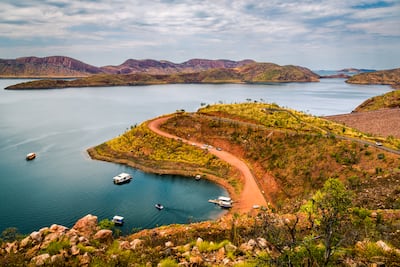
The blockbuster Crocodile Dundee trilogy fuelled a tourism boom from the 1980s, with Australia attracting travellers keen to explore its remote wilderness and meet, from a safe distance, its crocodiles, sharks and snakes.
Unfortunately, maintaining that distance is not always possible once tourists venture into the untamed landscapes of the Northern Territory and Western Australia. Each year in the country, one person on average is attacked by a crocodile, which can grow up to six metres long and weigh more than 1,000kg. Victims are typically either found fishing or swimming in rivers, creeks or water holes.
Australia’s heat makes those places attractive for tourists to cool down in, and some are overrun with foreign visitors, such as the spectacular Wangi Falls in the Litchfield National Park in the Northern Territory. A male tourist was attacked at that photogenic site in 2017, while in May this year, a female tourist was seriously injured when she was mauled by a crocodile at another popular attraction, Lake Argyle in Western Australia.
Great Barrier Reef, Queensland
Covering an area four times the size of the UAE, the Great Barrier Reef is the world’s largest coral reef system and the ultimate bucket list destination for travellers to Australia. But much like the above locations, many dangers lurk beyond the reef’s beauty.
It was here, in 2006, that popular wildlife expert and “Crocodile Hunter” Steve Irwin died after being pierced in the chest by a stingray barb. While that was a truly rare incident, tourists commonly get themselves into trouble while diving or snorkelling in this breathtaking location.
So frequently do boats have accidents or tourists get lost, drown, or suffer near-drownings in these ocean waters, that Maritime Safety Queensland has dozens of volunteers who are entrusted with carrying out rescues on the reef.
Mount Augustus, Western Australia
Uluru, or Ayers Rock, is a symbol of Australia and a Unesco World Heritage Site. Although not as famous, Mount Augustus is Australia’s largest monolith, twice the size of Uluru, and it attracts many visitors thanks to this heft and its prominence in Australian aboriginal mythology.
Unfortunately, some visitors who hike up or around Mount Augustus underestimate its rough terrain, brutal weather and extreme isolation. In summer, temperatures there can reach up to 47°C. This 715-metre-tall monolith is located in an empty and dry region of WA, about 850km north of the capital Perth, and more than five hours’ drive from the closest proper hospital.
In 2020, three people died in the space of six weeks at Mount Augustus after becoming lost and dehydrated while scaling the rock. Visitors to this monolith are warned not to hike alone. But even exploring it with a companion can turn deadly, as was the case in September 2020, when an older couple perished at Mount Augustus. In the weeks after that, another elderly visitor was lucky to survive after getting lost.
